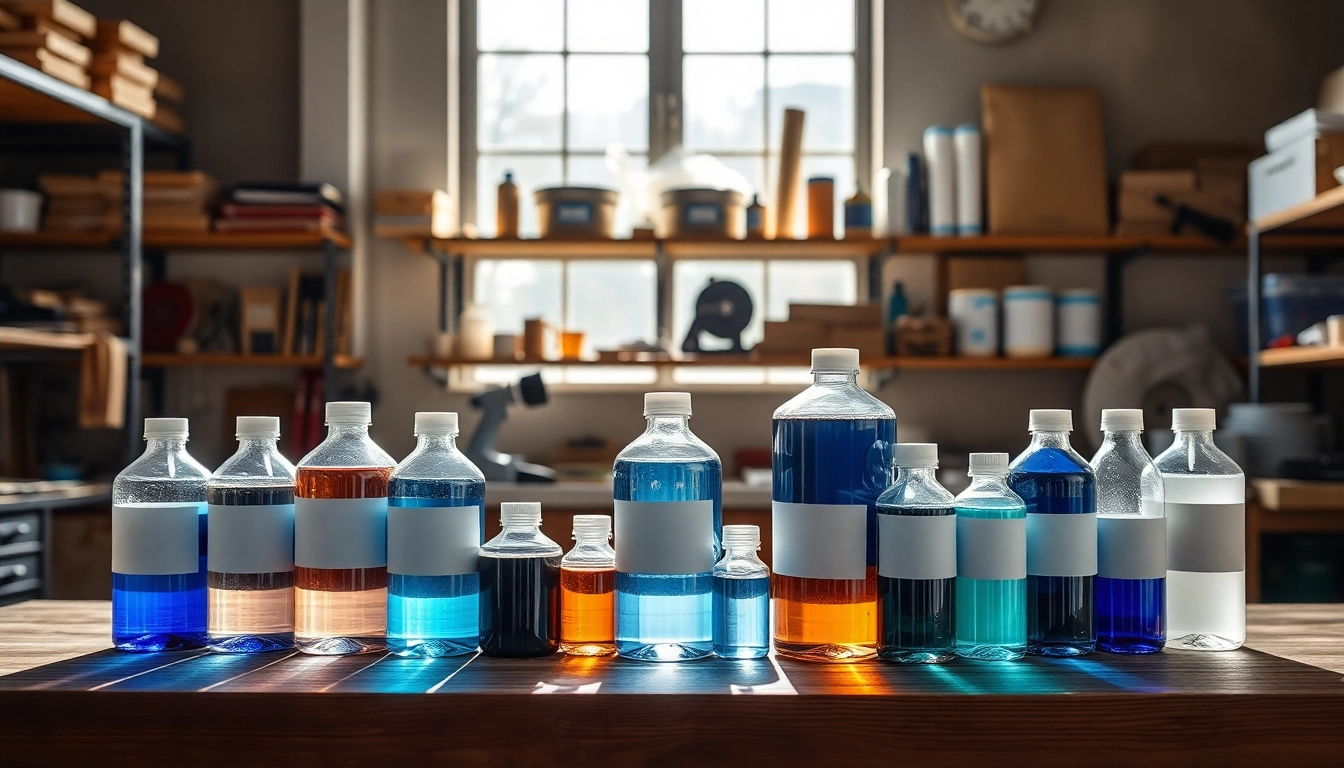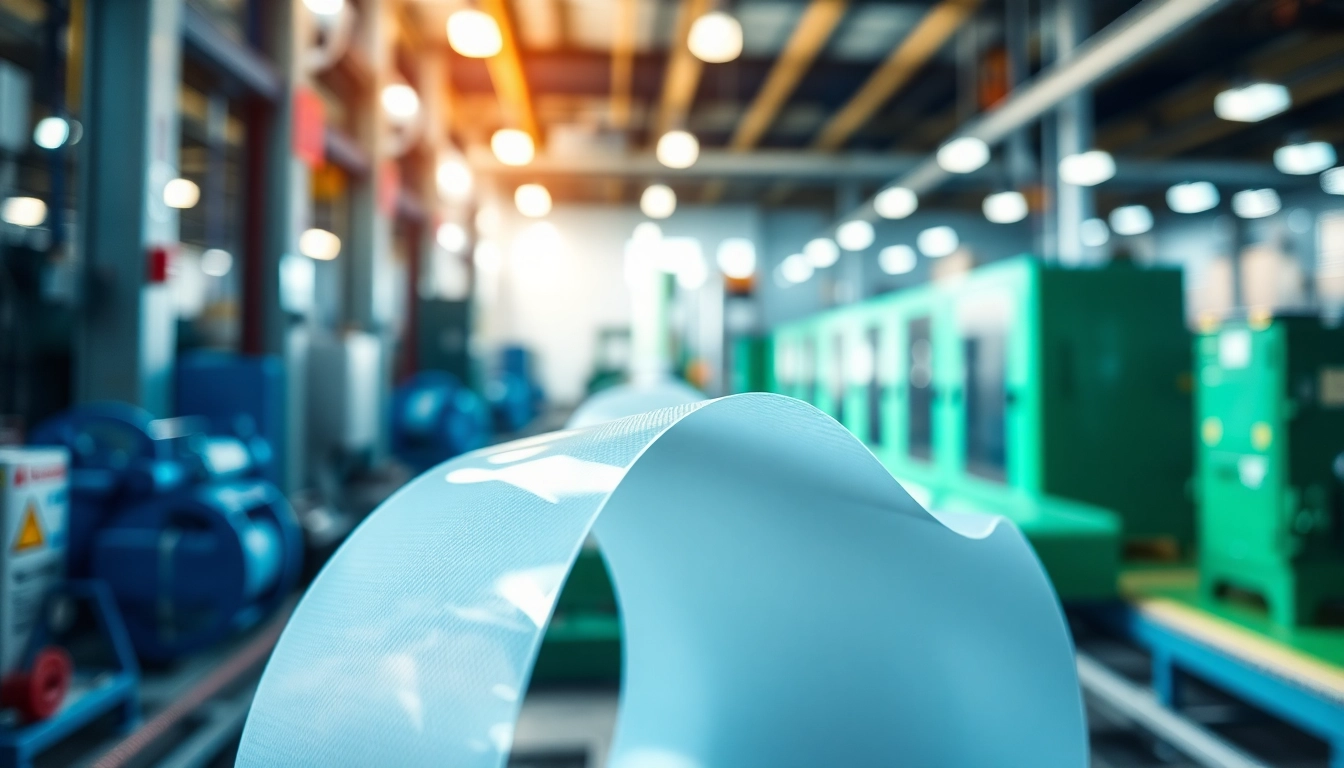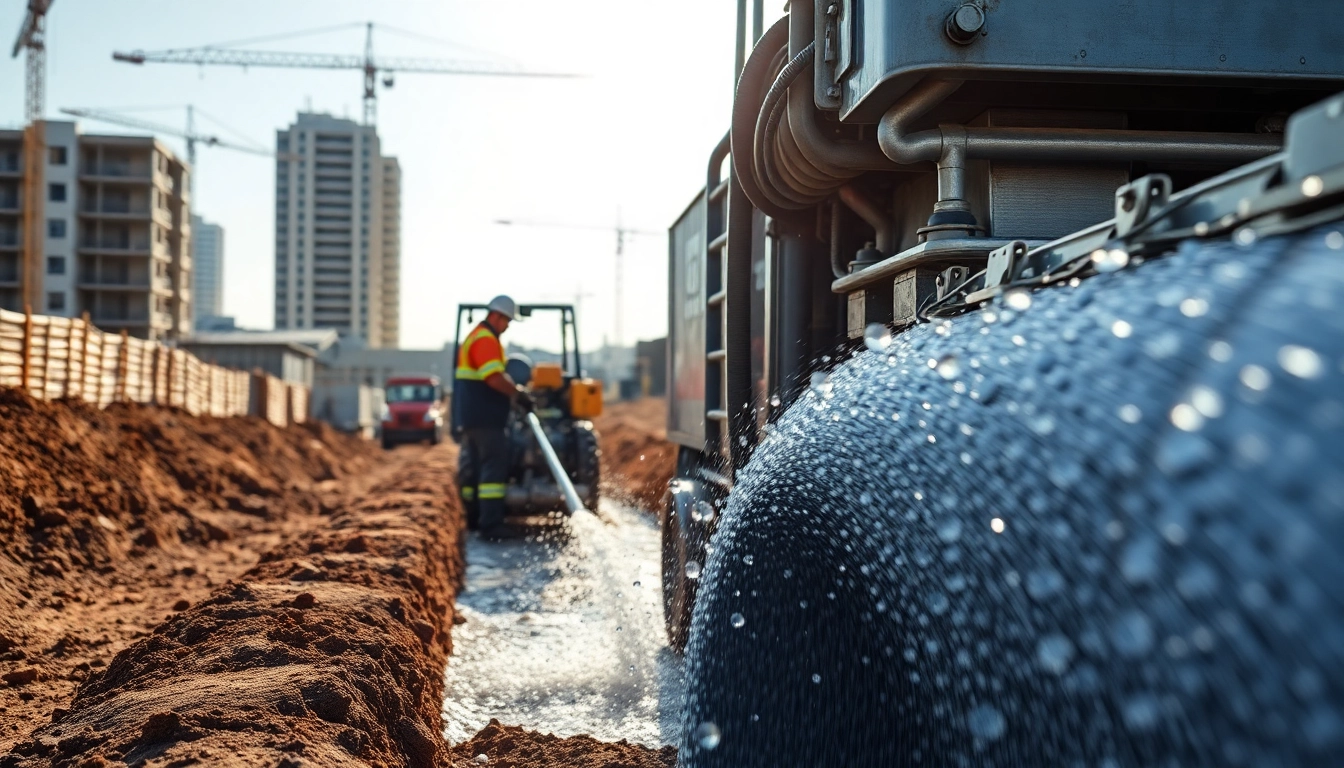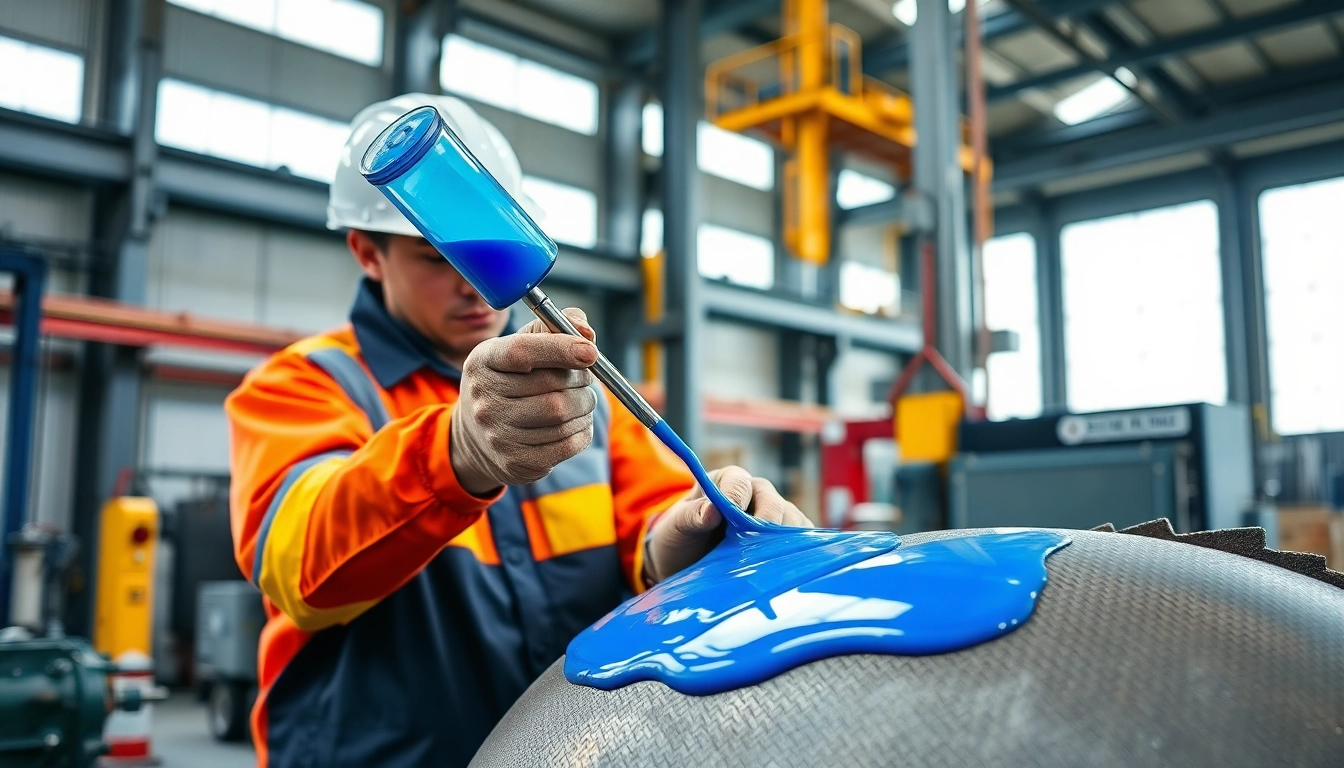Understanding Adhesive Films
What Are Adhesive Films?
Adhesive films are specialized materials designed to bond two surfaces together with precision and strength. These films often come in thin layers and incorporate various adhesive properties to meet specific bonding requirements. Unlike traditional adhesives that might require mixing or curing, adhesive films are pre-formed on a carrier film and are activated through heat or pressure, making them incredibly convenient for various applications.
Commonly utilized in industries such as aerospace, automotive, and defense, these films provide a clean and consistent composite bonding solution. You can explore more detailed information about these products on https://www.makobond.com/adhesives-films, where you will find advanced options tailored to meet demanding industrial requirements.
Key Properties of Adhesive Films
Adhesive films are characterized by several key properties that contribute to their effectiveness in bonding applications:
- Thickness: Generally, they come in various thicknesses, allowing for versatile application possibilities.
- Viscosity: This affects the cohesive and adhesive properties, influencing how well the film can bond to different substrates.
- Activation Temperature: Each film requires a specific temperature to activate, determining the heat-treatment process needed.
- Shear Strength: This defines the film’s ability to resist sliding failures, which is crucial for applications subject to varying forces.
- Temperature Resistance: Many adhesive films can withstand extreme temperatures, making them suitable for challenging environments.
Benefits of Using Adhesive Films
The decision to utilize adhesive films in manufacturing processes comes with several benefits:
- Ease of Application: Adhesive films are straightforward to apply, requiring less training and reducing the risk of human error during the bonding process.
- Consistent Quality: The manufacturing of adhesive films ensures uniform quality across products, which translates into consistent bonding performance.
- Reduced Waste: Pre-measured and formed films help minimize excess material, thereby reducing waste and environmental impact.
- Versatility: They can bond efficiently to a wide array of substrates, including metals, plastics, and composites, extending their usability across different industries.
- Enhanced Performance: Innovations in adhesive film technology allow for their use in high-performance applications, providing durability and resilience.
Applications of Adhesive Films
Adhesive Films in Aerospace Manufacturing
Aerospace manufacturing relies heavily on the use of adhesive films due to their lightweight properties and strength. These films play a crucial role in assembling aircraft components, where traditional mechanical fasteners can add unnecessary weight. In addition, adhesive films can dampen vibrations and noise, enhancing the passenger experience and overall performance of the aircraft.
Moreover, films resistant to extreme temperatures and environmental conditions make them ideal for use in various aerospace applications, from structural components to interiors. Understanding the right adhesive film for specific aircraft parts can lead to improved operational efficiency and safety.
Role of Adhesive Films in Automotive Industry
In the automotive industry, adhesive films are increasingly being used as alternatives to traditional bonding methods for several reasons:
- Weight Reduction: The shift towards lightweight vehicles means using materials like adhesive films to replace heavier metal fastening systems.
- Improved Aesthetics: Adhesive films can provide a seamless finish, essential for modern vehicle designs that emphasize sleekness and style.
- Corrosion Resistance: Many adhesive films resist chemicals and environmental factors that may lead to corrosion, thereby extending vehicle lifespan.
The automotive sector’s continuous drive for innovation means that adhesive films will become even more integral in future vehicle designs.
Using Adhesive Films in Defense & Marine Technology
Adhesive films find vital applications in both defense and marine technology due to their high performance and reliability under extreme conditions. In military applications, these films are used in the assembly of equipment and vehicles where structural integrity is paramount. Their ability to disperse stress and provide consistent bonding helps ensure the reliability of critical defense systems.
In the marine sector, adhesive films assist in constructing boats and ships, helping to maintain lightweight structural integrity while providing resistance to water and environmental damage. Understanding the stringent demands of both these sectors can help manufacturers select the optimal adhesive film for their applications.
Choosing the Right Adhesive Film
Factors to Consider When Selecting Adhesive Films
Selecting the appropriate adhesive film involves several considerations:
- Substrate Compatibility: Ensure that the adhesive film is compatible with the types of materials being bonded.
- Environmental Factors: Consider exposure to humidity, temperature fluctuations, and chemicals that might impact adhesion.
- Performance Requirements: Assess the strength, flexibility, and durability required for the application.
- Application Method: Understand whether the film will be applied manually or through automation, as this can affect film choice.
Common Challenges with Adhesive Film Usage
While adhesive films offer numerous advantages, users may face challenges, including:
- Mismatched Performance Expectations: Inadequate knowledge of film properties may lead to underperformance in critical applications.
- Surface Preparation Issues: Proper surface preparation is crucial; any contaminants can significantly affect bonding quality.
- Temperature Control: Variations in temperature during application can hinder the activation and bonding quality of the film.
Addressing these challenges through thorough preparation and material knowledge is essential for successful implementation.
Evaluating Performance Metrics of Adhesive Films
To gauge the effectiveness of adhesive films, companies often measure several performance metrics:
- Peel and Shear Strength: Evaluating the film’s resistance to separation under various loads.
- Durability Testing: Conducting long-term assessments to ensure the bonding remains intact over time.
- Environmental Resistance: Testing the film’s performance under different environmental conditions to ensure reliability.
By closely monitoring these metrics, manufacturers can ensure that the adhesive films meet their specific operational requirements.
Best Practices for Applying Adhesive Films
Surface Preparation Techniques
Proper application of adhesive films starts with effective surface preparation. Cleaning surfaces to remove oils, dust, or other contaminants is crucial. Techniques include:
- Mechanical Cleaning: Using abrasives or scrapers to prepare rough surfaces.
- Sanding: Fine sanding provides a better grip for the adhesive film.
- Chemical Cleaning: Use solvents or cleaning agents appropriate for the substrate materials.
Investing time in surface preparation can make a substantial difference in the final bonding performance.
Optimal Temperature and Pressure Settings
The temperature and pressure applied during the bonding process are critical factors affecting the success of adhesive films. Here are best practices:
- Follow Manufacturer Guidelines: Always refer to specific temperature and pressure recommendations provided by the adhesive film manufacturer.
- Utilizing Heat Sources: Apply heat evenly when activating films, as inconsistent temperatures could lead to weak bonds.
- Pressure Application: Ensure uniform pressure is exerted over the surface area to promote proper adhesion.
Optimal conditions can significantly enhance the bonding strength and lifespan of adhesive films.
Quality Control Measures Post-Application
Post-application assessments are essential for quality assurance. Implementing the following measures can maintain high standards:
- Visual Inspection: Checking for any visible defects, such as bubbles or misalignments.
- Performance Testing: Conduct tests specific to the adhesion requirements of the application.
- Documentation: Keeping detailed records of application conditions can help refine future processes.
These steps ensure that the adhesive films used are up to standard and capable of delivering the intended performance.
Future Trends in Adhesive Film Technology
Emerging Innovations in Adhesive Films
The adhesive film sector is seeing rapid advancements that could reshape industry standards. Some of the key trends include:
- Smart Adhesive Films: Developed with embedded sensors to provide real-time feedback on bond quality and performance.
- Recyclable and Biodegradable Films: Innovations are leading to environmentally friendly options that reduce waste and environmental impact.
- Enhanced Thermal and Electrical Conductivity: New formulations are enabling films that can conduct heat or electricity, opening pathways for new applications.
These innovations are poised to enhance the functionality and sustainability of adhesive films across various sectors.
Impact of Sustainability on Adhesive Film Development
As sustainability becomes increasingly critical in manufacturing, adhesive film developers are focusing on eco-friendly materials and processes. This shift includes:
- Using Renewable Resources: Sourcing materials derived from renewable resources to minimize environmental impact.
- Energy Efficient Production: Streamlining manufacturing processes to reduce energy consumption during production.
- End-of-Life Solutions: Designing films that can be easily removed or recycled to minimize waste at the end of their lifecycle.
The evolution of adhesive films in the context of sustainability is becoming a significant selling point for manufacturers.
Predicted Changes in Market Demand and Applications
As technology advances and industries begin to prioritize efficiency and sustainability, the demand for adhesive films is projected to rise. Trends to watch for include:
- Increased Automation: As industries automate more processes, the pre-formulated nature of adhesive films will likely drive adoption.
- Greater Customization: The custom-tailoring of adhesive films to meet specific industrial requirements will become more commonplace.
- Widespread Use Across Emerging Industries: New sectors, such as renewable energy and smart packaging, are expected to start utilizing adhesive films in their manufacturing processes.
These predicted shifts suggest a vibrant future for adhesive films, enabling further innovations and applications across industries.










Leave a Reply